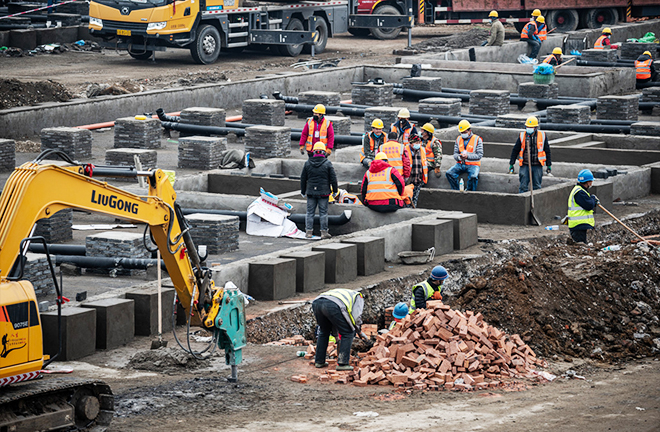Steering labor mobility toward new quality productive forces

Migrant workers have tended to concentrate in labor-intensive industries. Photo: TUCHONG
President Xi Jinping has asserted that new quality productive forces are driven by revolutionary technological breakthroughs, innovative allocation of production factors, and deep industrial transformation and upgrading, with the improvement of workers, means of labor, subjects of labor, along with their optimal combinations as its basic connotation.
Labor mobility across urban and rural areas, regions, and sectors not only enables the optimal allocation of labor and associated factors such as capital and technology, but also, through optimized integration with means of labor and subjects of labor, improves regional employment structures and industrial configurations. Therefore, addressing the challenges of labor mobility and the rational allocation of labor resources are crucial to developing new quality productive forces.
Removing barriers to mobility
Traditional labor mobility patterns struggle to fulfil the “new” requirements of new quality productive forces. On one hand, a long-term exodus of young and middle-aged workers from rural areas to urban centers has left behind the elderly, children, persons with disabilities, and those with chronic conditions. This unbalanced demographic structure constrains rural human capital at low levels and leads to abandoned arable land, declining traditional culture, and “hollow villages,” all of which severely diminish rural productivity. On the other hand, a labor market where labor flows freely between urban and rural areas or across regions has yet to form, hindering targeted “labor export” and the development of new productive forces tailored to local conditions.
The household registration (hukou) system and its associated urban-rural welfare provision disparities are seen as the greatest barriers to the free movement of labor across regions. To address this, several steps should be taken. First, public service reforms and innovations in areas such as education, health care, housing, and employment should be bolstered to facilitate the “citizenization” of rural migrant workers. Second, differentiated household registration policies should be formulated according to the resource endowments and developmental needs of different regions and cities in order to create more channels for rural-urban labor mobility. Third, policies that support family migration can be put in place to ensure that migrant families can access social caregiving services.
Reshaping mobility patterns
Traditional labor mobility falls short of the “quality” standards of new quality productive forces. Migrant workers have traditionally come from rural surplus labor and have tended to concentrate in labor-intensive industries. When such labor flows into strategic emerging industries characterized by high technological thresholds, structural imbalances often arise, with a surplus of low-skilled workers and a shortage of high-skilled workers. Furthermore, traditional rural-urban labor mobility often fails to drive the free movement of associated factors such as land, capital, and technology, resulting in idle and wasted resources.
An aging and shrinking population is gradually becoming the new normal for China’s economic development, and the key to responding to these demographic changes is to foster new patterns of labor mobility. First, rural and underdeveloped areas can guide the return of labor along with capital and technology, as well as improve re-employment policies for older migrant workers. Second, urban and developed areas should improve social security and welfare systems for migrant workers and enhance cities’ capacity for supporting their populations. Third, labor mobility toward neighboring areas, primarily county-level areas, should be encouraged, so that the latter functions as a tie between urban and rural socioeconomic development, boosting the development of surrounding rural areas.
Improving mobility quality
The development of new-quality productive forces needs to be underpinned by a highly skilled workforce. First, efforts to actively attract the movement of high-end talent and transform the “demographic dividend” into a “talent dividend” should be anchored in strategic emerging industries and future-oriented industries, with a focus on disruptive and cutting-edge technologies. Second, cultivating high-skilled technical talent requires strengthening the leading role of higher education institutions in innovative technology education and application. Third, talent evaluation mechanisms should be optimized to promote the healthy development of the talent market, ensuring a balance between labor supply and demand across industries, regions, and sectors.
Fan Shide (professor) and Huang Tianzhou are from the School of Economics at Nanjing Audit University.
Edited by WANG YOURAN

 PRINT
PRINT CLOSE
CLOSE